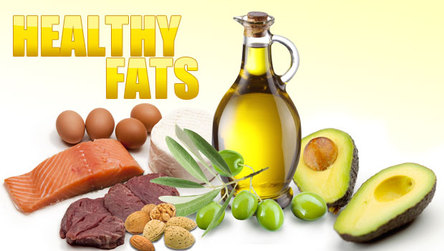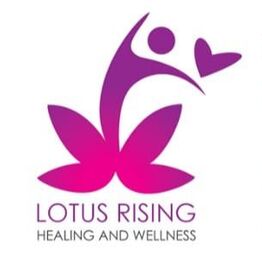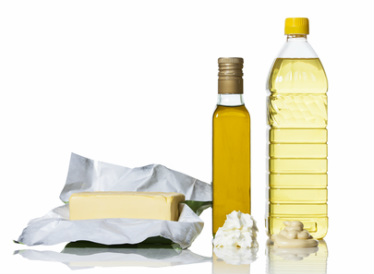
The health of a food is correlated to how much it is processed. The more any food is processed, the more it causes inflammation and damage in the body. When foods are processed, they go from a natural to an unnatural form. My philosophy is simple, if the food didn’t exist in its current form, 5,000 years ago, then it’s probably not something that belongs in my body. The Creator made food in the form it was meant to be eaten to keep your bodies strong and vibrant! It is seriously this simple. As soon as man began altering food, the rate of disease sky-rocketed. The father of medicine, Hippocrates, said it best himself, ‘Let thy food be thy medicine and thy medicine they food.'
Nothing was more detrimental to our health than the idea of making food last a long time and creating ways to make food preparation convenient. In fact, before the convenience food epidemic, heart disease was not even an issue. For example, in 1910, the heart disease rate was less than ten percent. It is now 45%. According to the CDC (Centers for Disease Control) it is the leading cause of death in men and women. Someone has a heart attack in the US every thirty four seconds. (CDC) In fact, before 1920, coronary heart disease was so rare in America that when Paul Dudley White introduced his invention, the electrocardiogram to Harvard University, they told him to go focus on something more profitable because there was little use for this machine!
In a recent report in the Journal of Alzheimer’s Disease., Mayo Clinic researchers showed
that individuals favoring carbohydrates in their diets had a remarkable 89% increased risk for developing dementia as contrasted to those whose diets contained the most fat. Having the highest levels of fat consumption was actually found to be associated with an incredible 44% reduction in risk for developing dementia (PsychologyToday.com).
Friends, it’s time to educate ourselves! If we continue to listen to the recommendations of our government, chances are good we’ll become one of their statistics. In fact, chances are almost 50% for heart attacks alone. That’s one out of every two people.
In my opinion, learning the truth about fat is a great place to begin.
In 1910, when the rate of heart disease was much lower in the US than it is now, people were eating an average of 18 pounds of butter per person each year. That number has now gone down to four pounds per year. Also in 1910, lard made from the fat of farm raised pigs was the number one cooking fat. This fat is high in Vitamin D, the nutrient now many of us are deficient in.
In 1911, Proctor and Gamble introduced Crisco. To the unsuspecting American, it was a dream. We didn’t have to make it ourselves, it lasted longer than lard and at the same time, we unknowingly began eating trans fats.
By 1930, margarine consumption surpassed butter consumption. By 1948, obesity and diabetes became public health problems. (By this time, sugar consumption had also increased dramatically.)
In 1953, a major study put out by Ancel Keys, convinces America to eat less fat and more carbohydrates.
And now, here we are, disease rates and obesity out of control and how many millions of dollars have been spent on ‘research.’ Where are the answers?
One thing we can now be sure of is that artificial trans- fats and hydrogenated oils are damaging to our health and any food with these on the labels should always be avoided. Artificial trans-fats come from man-made fats such as hydrogenated oil and are not to be confused with the small amounts of trans-fats in beef and dairy, etc… It is the artificial trans-fats and other processed foods that we can thank the rise in heart disease for.
Hydrogenation is a process that creates a solid, shelf-stable fat that looks nothing like the vegetable fat it originated from. To make a hydrogenated oil, the oil is washed, bleached, deodorized and then heated to very high temperatures. Then hydrogen gas is bubbled through the mixture. Hydrogenation totally alters the molecular make-up of the original fat. It ends up being molecularly closer to plastic than fat and is a dangerous free-radical in the body. The way I understand this, this means that these free radicals are missing electrons and when they enter the body, they damage heart cells by ‘stealing’ electrons from them. The body has no use for these trans-fats and so it stores them away in fat cells and arteries to protect the rest of the body from them. Then the body waits for the healthy fat to come, causing us to crave more fat so the body can get the essential fatty acids it’s looking for. Can you see what we are putting the body through when we eat hydrogenated oils and artificial trans- fats?
There are three types of fats: saturated, monounsaturated and polyunsaturated.
Saturated fats are found in animal fats and tropical oils. They are the most stable under high heat. They give cells stiffness and integrity and constitute 50% of the cell membranes (ie, necessary for cellular health). They are necessary for calcium to be effectively incorporated into the skeletal system because the fat carries the minerals into the bones. I actually became totally mineral deficient when I was a raw-foodist and did not eat animal fats! Coconut oil is saturated and is therefore good for cooking. It is also rich in lauric acid which is known to be anti-viral, anti-bacterial and anti-fungal. According to Dr. Al Sears, M.D., ‘the saturated fat found in coconut oil is a unique fat that helps prevent heart disease, helps to build up the immune system and does not turn into fat in your body.’
According to Dr. Al Sears, MD, we need fat to transport nutrients, build a faster brain, maintain body temperature and give us energy.
The next type of fats are polyunsaturated fats. They are very fragile and most processed oils in this class are damaged before you even open the bottle they come in. The extraction process alone, which involves high heat, causes these fats to go rancid. These include soy, corn, cottonseed, canola and peanut oil. All are best kept out of your diet. Most of them are from genetically modified sources, which can cause damage to your digestive tract. Processed vegetable oils such as these cause inflammation and heart disease (Mercola). Other sources include fish oil, eggs and walnuts which are rich sources of Omega 3 essential fatty acids. These fats should not be heated, so eat your walnuts raw and your egg yolks runny! If you choose to use fish oil, the only non-heated variety I am aware of is from ww.greenpasture.org and I highly recommend it.
The third type of fat is monounsaturated. These do not go rancid as easily as long as you purchase the cold pressed variety. My favorite source for all oils is www.omeganutrition.com because they patented their own processing system to make sure the oil is never exposed to heat, light or oxygen before you open the opaque bottle. Monounsaturated oils should not be heated above 325ᵒ to prevent rancidity and should be bottled in opaque bottles to prevent light exposure. Remember to always avoid the smoke point with oils. This means, if you are cooking with the oil and it begins to smoke, turn the heat down right away or this oil will become a free radical, causing damage to your heart cells and organs. Olive oil and avocados fall into this category as do almonds, pecans, cashews, and peanuts.
The best fats to eat are butter from grass-fed cows. I use Kerrygold or Strauss brand. If you can get it straight from the farmer, even better, or make it yourself. I also use grass-fed ghee. I have found a source for leaf lard at my farmer’s market. I also use coconut oil. We use cold-pressed olive oil. We drink whole raw milk and raw milk cheese. I eat whole milk yogurt. Avocados and raw nuts and seeds are good fats also. One of my favorites is olives. Just remember, the soil you food grows in and the food, your food eats, makes all the difference in the quality of the fat!
Next time I will discuss Omega 3 vs. Omega 6 fatty acids, so stay tuned!
You might also be interested in these articles:
Fat is Not the F-Word and It Just Might Be What you Need to Stay Slim & Trim
Fatman: The Forgotten Hero in the Battle of the Bulge
Fat: What's the Right Amount for Me?





 RSS Feed
RSS Feed